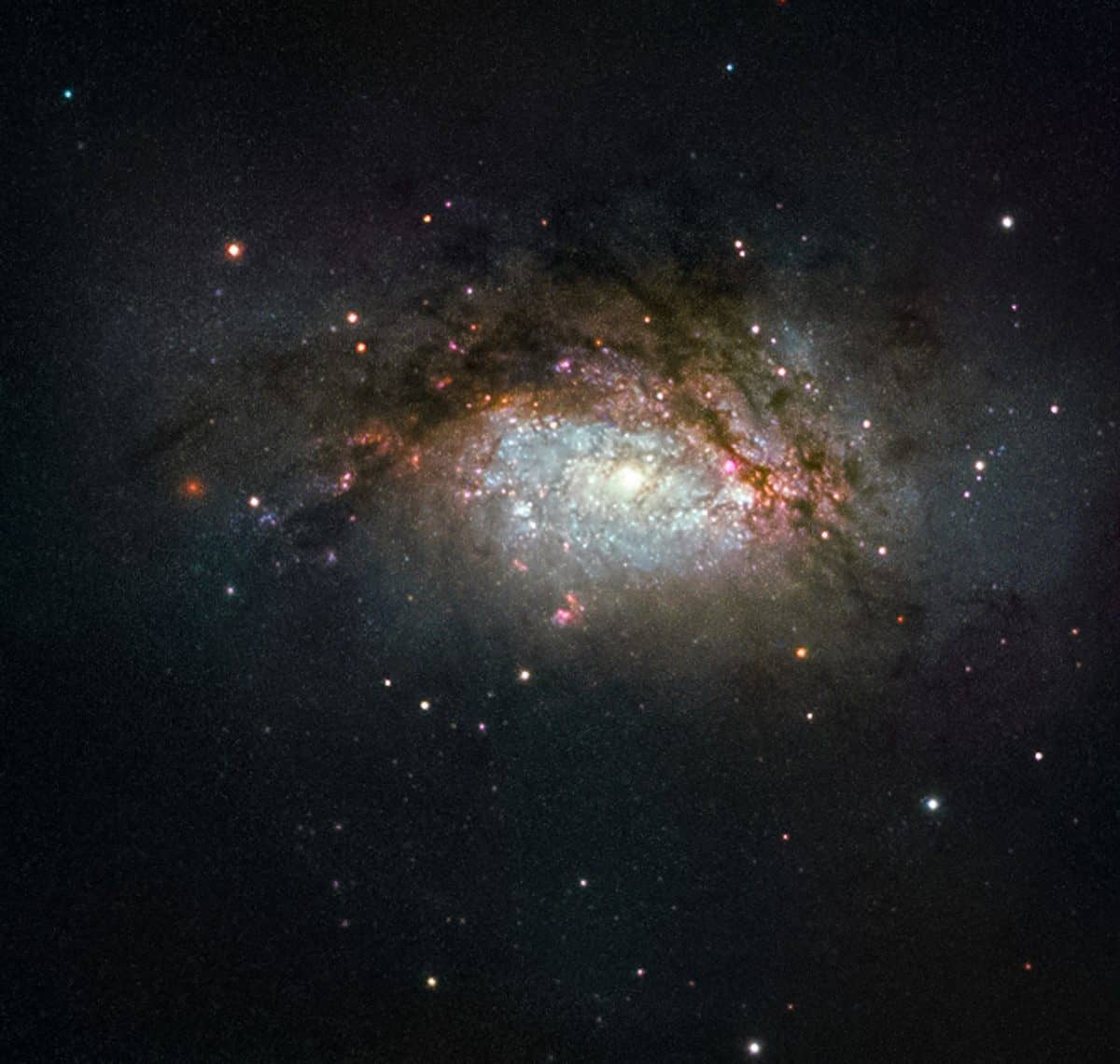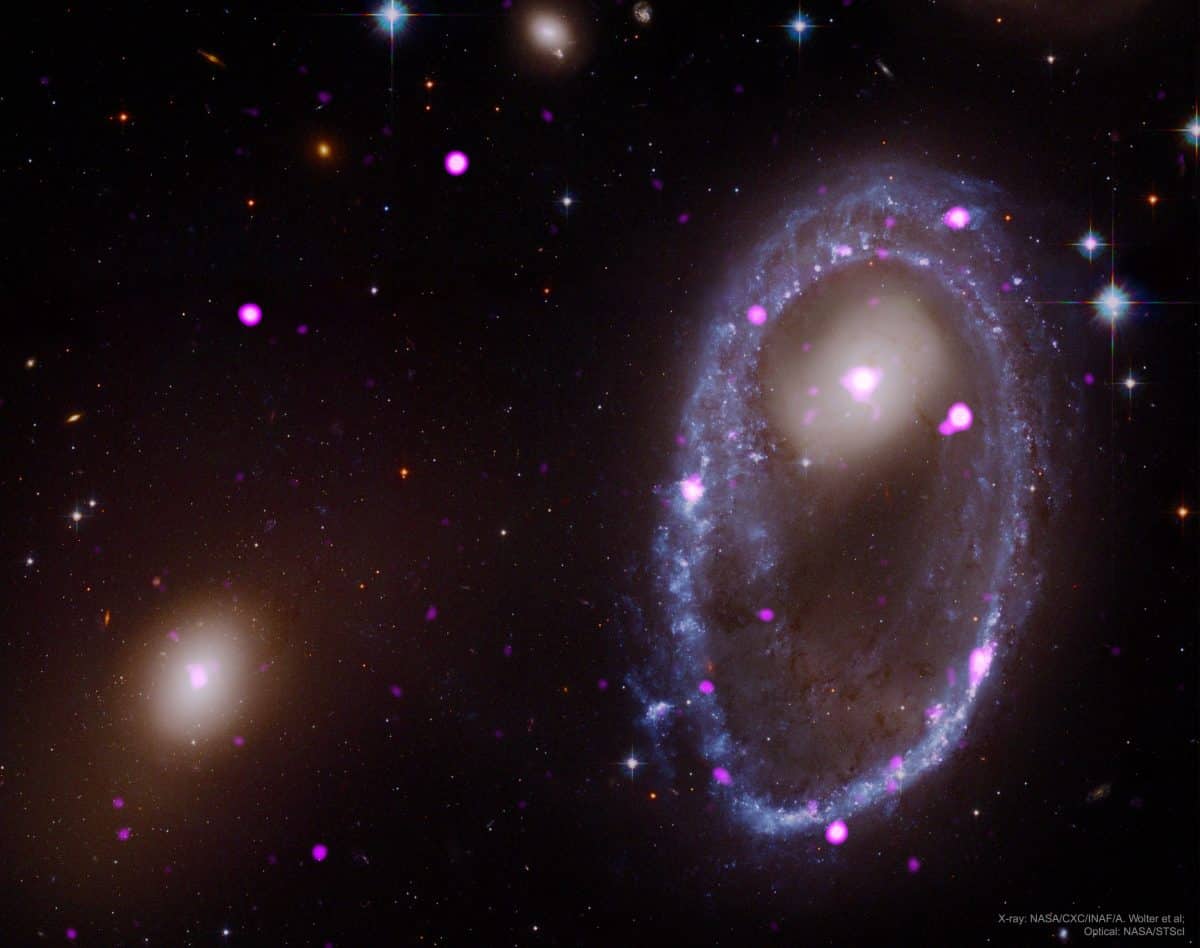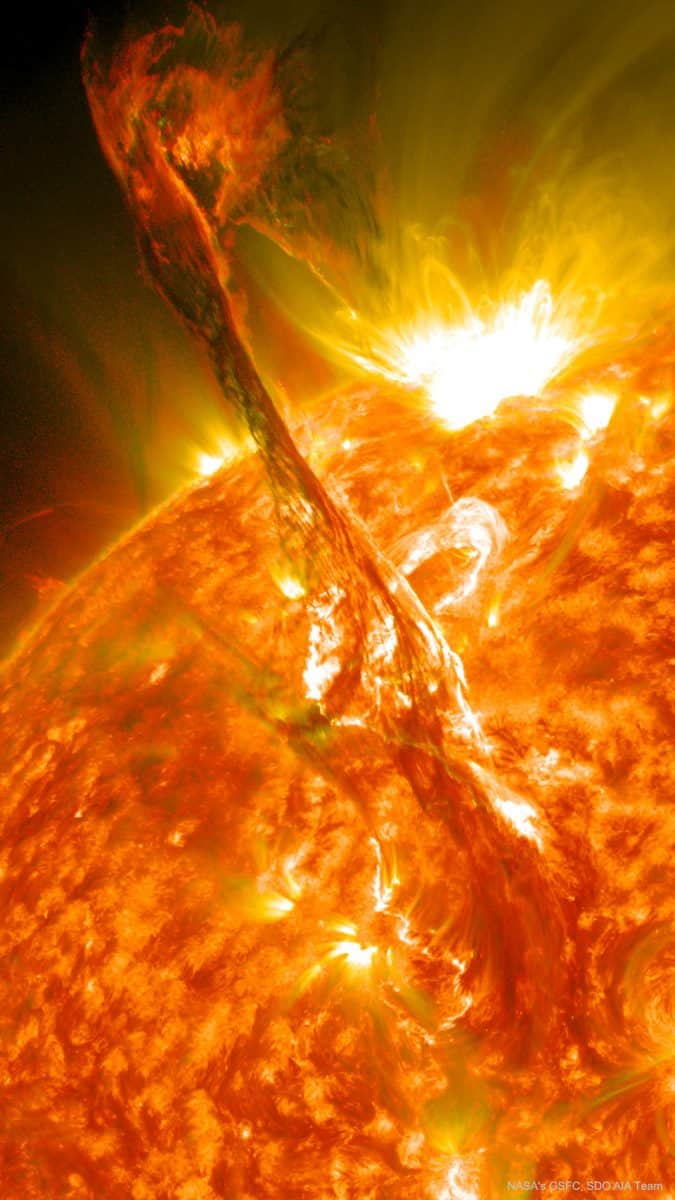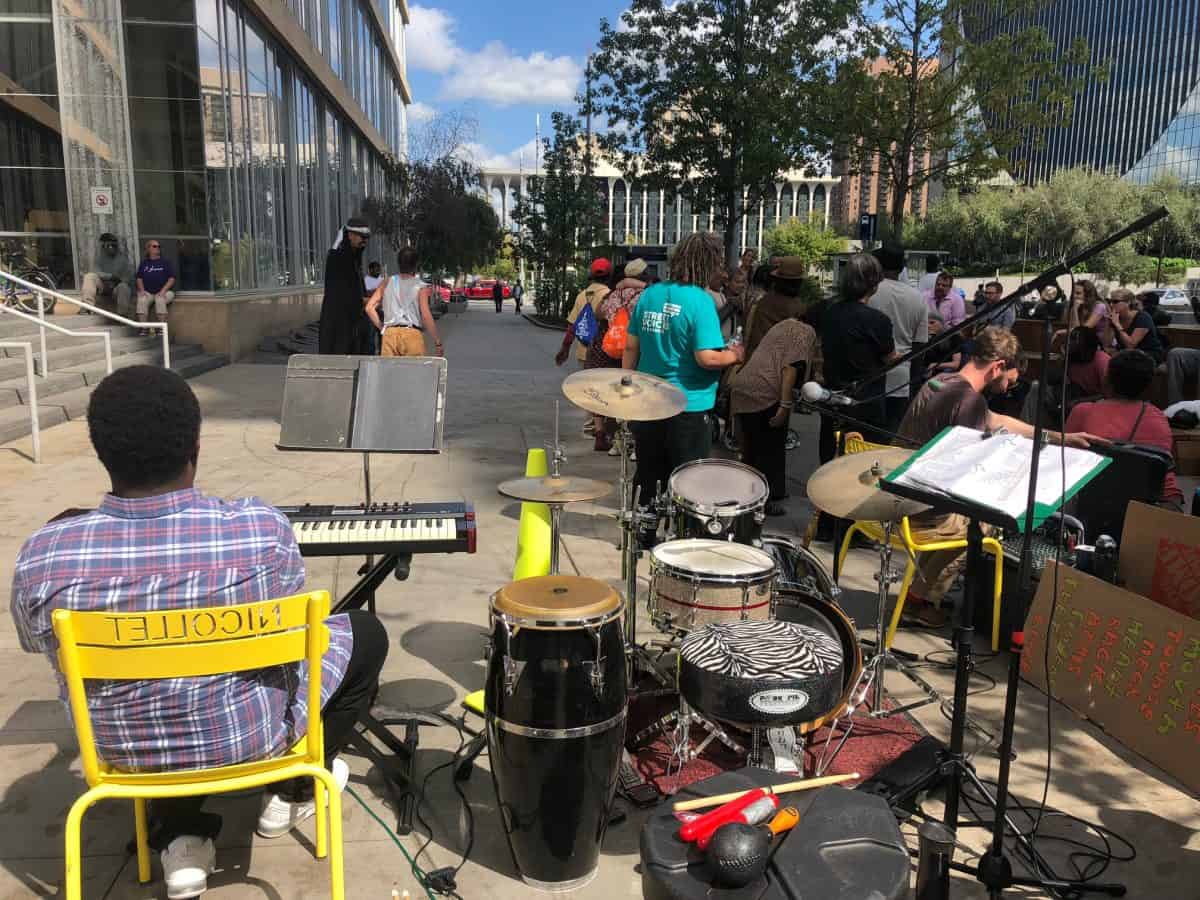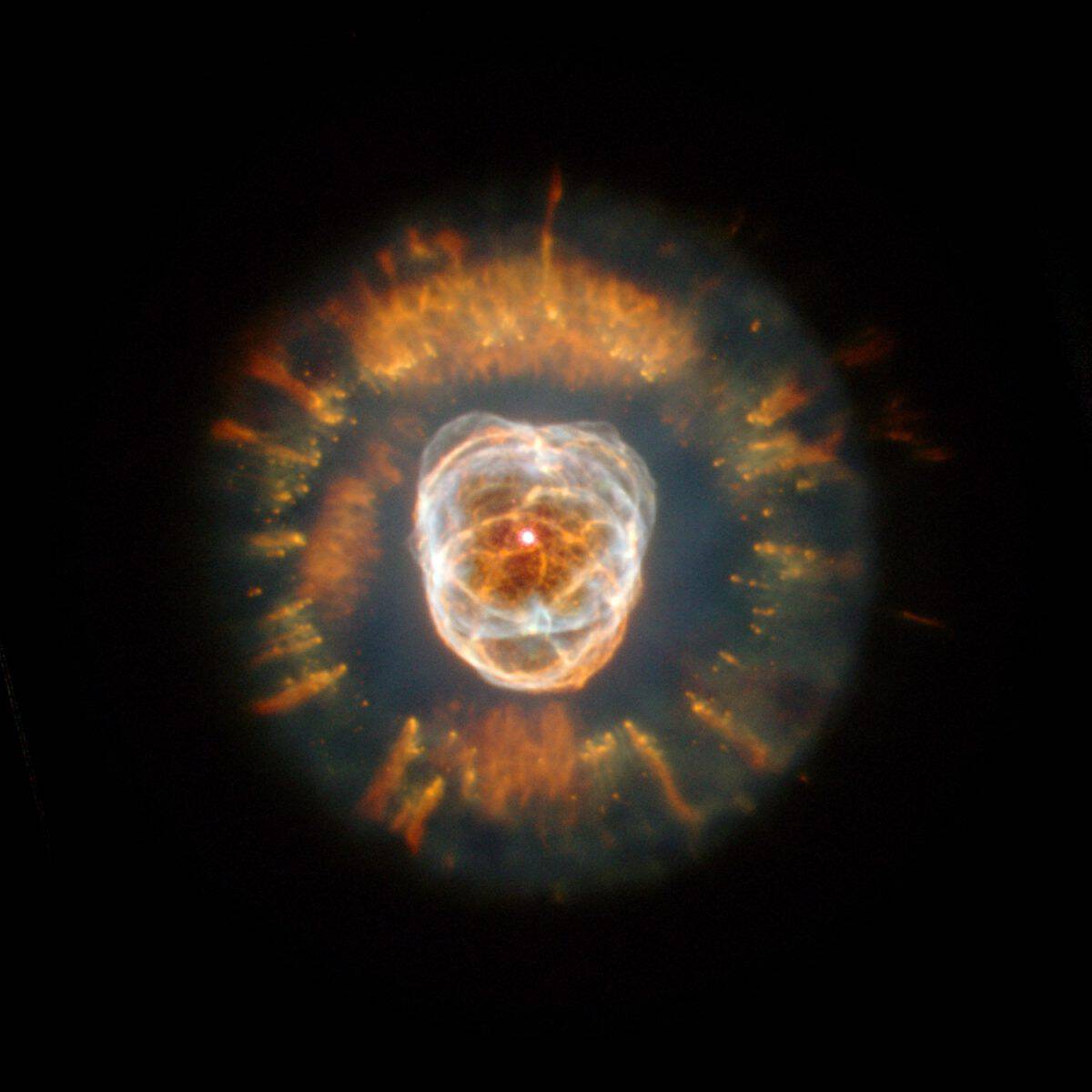Blog
NGC 3597, also known as PGC 34266 and ESO 503-3, is a galaxy in the constellation Crater, approximately 147 million light-years away from us.
The subject of this NASA/ESA Hubble Space Telescope image is known as NGC 3597. It is the product of a collision between two good-sized galaxies, and is slowly evolving to become a giant elliptical galaxy. This type of galaxy has grown more and more common as the Universe has evolved, with initially small galaxies merging and progressively building up into larger galactic structures over time.
NGC 3597 is located approximately 150 million light-years away in the constellation of Crater (The Cup). Astronomers study NGC 3597 to learn more about how elliptical galaxies form — many ellipticals began their lives far earlier in the history of the Universe. Older ellipticals are nicknamed “red and dead” by astronomers because these bloated galaxies are not anymore producing new, bluer, stars in ages, and are thus packed full of old and redder stellar populations.
Before infirmity sets in, some freshly formed elliptical galaxies experience a final flush of youth, as is the case with NGC 3597. Galaxies smashing together pool their available gas and dust, triggering new rounds of star birth. Some of this material ends up in dense pockets initially called proto-globular clusters, dozens of which festoon NGC 3597. These pockets will go on to collapse and form fully-fledged globular clusters, large spheres that orbit the centres of galaxies like satellites, packed tightly full of millions of stars.
more...
Though he was certainly capable of brilliantly fronting a band, remarkably versatile guitarist/harpist Louis Myers will forever be recognized first and foremost as a top-drawer sideman and founding member of the Aces — the band that backed harmonica wizard Little Walter on his immortal early Checker waxings.
Along with his older brother David — another charter member of the Aces — Louis left Mississippi for Chicago with his family in 1941. Fate saw that the family move next door to blues great Lonnie Johnson, whose complex riffs caught young Louis‘ ear. Another Myers brother, harp-blowing Bob, hooked Louis up with guitarist Othum Brown for house party gigs. Myers also played with guitarist Arthur “Big Boy” Spires before teaming with his brother, David, on guitar and young harpist Junior Wells, to form the first incarnation of the Aces (who were initially known as the Three Deuces). In 1950, drummer Fred Below came on board.
In effect, the Aces and Muddy Waters traded harpists in 1952, Wells leaving to play with Waters while Little Walter, just breaking nationally with his classic “Juke,” moved into the frontman role with the Aces. Myers and the Aces backed Walter on his seminal “Mean Old World,” “Sad Hours,” “Off the Wall,” and “Tell Me Mama” and at New York’s famous Apollo Theater before Louis left in 1954 (he and the Aces moonlighted on Wells‘ indispensable 1953-1954 output for States).
Plenty of sideman work awaited Myers — he played with Otis Rush, Earl Hooker, and many more. But his own recording career was practically non-existent; after a solitary 1956 single for Abco, “Just Whaling”/”Bluesy,” that found Myers blowing harp in Walter-like style, it wasn’t until 1968 that two Myers tracks turned up on Delmark.
more...Frank Socolow (September 18, 1923 – April 30, 1981), born in New York City, was a jazz saxophonist and oboist, noted for his tenor playing.
Socolow began his career in the early 40s playing in swing bands led by Georgie Auld, Ted Fio Rito, Roy Stevens, Van Alexander and Shep Fields. In 1944 he landed the first of three stints (the others being in 1948 and 1956–57) with Boyd Raeburn‘s Orchestra, recording a number of records. In 1945 he recorded a session as leader (the first of only two) with Freddie Webster and a young Bud Powell for Duke Records.
He was a member of Buddy Rich‘s short-lived big band, toured Scandinavia 1947-48 with Chubby Jackson, joined Artie Shaw‘s big band 1949-50, and throughout the late 40s and the 50s recorded with a wide variety of artists including the aforementioned, Johnny Bothwell, Charlie Ventura, Gene Krupa, Sal Salvador, Maynard Ferguson, Terry Gibbs, Phil Woods, Cecil Payne, Manny Albam, Hal McKusick, Johnny Richards, Bill Russo, Joe Morello, and Bobby Scott. His second record session as leader, and only full album release, Sounds by Socolow, came in 1956 for Bethlehem Records, with arrangements by Bill Holman, Manny Albam, and Sal Salvador, the latter also contributing guitar. Socolow died in New York in 1981.
more...Lázaro Ros (1925-2005) was Cuba’s most famous akpwan, singer of Toruba ceremonial chants that invoke the Orishas. In 1962, he co-founded Conjunto Folklorico Nacional De Cuba, an ensemble dedicated to preserving the nation’s Afro-Cuban music and dances.
https://www.youtube.com/watch?v=K8-YxJ87EPU
more...https://www.youtube.com/watch?v=GPfdKiYUsKg
more...How could a galaxy become shaped like a ring? The rim of the blue galaxy pictured on the right is an immense ring-like structure 150,000 light years in diameter composed of newly formed, extremely bright, massive stars. That galaxy, AM 0644-741, is known as a ring galaxy and was caused by an immense galaxy collision. When galaxies collide, they pass through each other — their individual stars rarely come into contact. The ring-like shape is the result of the gravitational disruption caused by an entire small intruder galaxy passing through a large one. When this happens, interstellar gas and dust become condensed, causing a wave of star formation to move out from the impact point like a ripple across the surface of a pond. The likely intruder galaxy is on the left of this combined image from Hubble (visible) and Chandra (X-ray) space telescopes. X-ray light is shown in pink and depicts places where energetic black holes or neutron stars, likely formed shortly after the galaxy collision, reside.
AM 0644-741, also known as the Lindsay-Shapley Ring, is an unbarred lenticular galaxy, and a ring galaxy, which is 300 million light-years away in the southern constellation Volans.
more...Eugene McDuff (September 17, 1926 – January 23, 2001), known professionally as “Brother” Jack McDuff or “Captain” Jack McDuff, was an American jazz organist and organ trio bandleader who was most prominent during the hard bop and soul jazz era of the 1960s, often performing with an organ trio. He is also credited with giving guitarist George Benson his first break.
Born Eugene McDuffy in Champaign, Illinois, McDuff began playing bass, appearing in Joe Farrell’s group. Encouraged by Willis Jackson in whose band he also played bass in the late 1950s, McDuff moved to the organ and began to attract the attention of Prestige while still with Jackson’s group. McDuff soon became a bandleader, leading groups featuring a young George Benson on guitar, Red Holloway on tenor saxophone and Joe Dukeson drums.
McDuff recorded many classic albums on Prestige, including his debut solo Brother Jack in 1960; The Honeydripper (1961), with tenor saxophonist Jimmy Forrest and guitarist Grant Green; Brother Jack Meets The Boss (1962), featuring Gene Ammons; Screamin’ (1962), with alto saxophonist Leo Wright and guitarist Kenny Burrell; and Brother Jack McDuff Live! (1963), featuring Holloway and Benson, which includes his biggest hit, “Rock Candy”.
more...Blind James Campbell (September 17, 1906 – January 22, 1981) was an American blues singer and guitarist. He is mostly remembered for his 1962–63 recording for the Arhoolie label with his Nashville Street Band.
James Campbell was born in Nashville, Tennessee, on September 17, 1906. He later became known as Blind James Campbell after an accident at a fertilizer plant left him permanently blinded. In 1936 he formed a band and began playing folk, country, pop, jazz and blues music at parties, dances and for other local events. The Nashville Street Band consisted of fiddler Beauford Clay (born 1900) who was a great influence on Campbell’s playing, second guitarist Bell Ray (born 1909), bass horn player Ralph Robinson (born 1885), and trumpeter George Bell.
more...What’s happened to our Sun? Nothing very unusual — it just threw a filament. Toward the middle of 2012, a long standing solar filament suddenly erupted into space producing an energetic Coronal Mass Ejection (CME). The filament had been held up for days by the Sun’s ever changing magnetic field and the timing of the eruption was unexpected. Watched closely by the Sun-orbiting Solar Dynamics Observatory, the resulting explosion shot electrons and ions into the Solar System, some of which arrived at Earth three days later and impacted Earth’s magnetosphere, causing visible aurorae. Loops of plasma surrounding an active regioncan be seen above the erupting filament in the featured ultraviolet image. Although the Sun is now in a relatively inactive state of its 11-year cycle, unexpected holes have opened in the Sun’s corona allowing an excess of charged particles to stream into space. As before, these charged particles are creating auroras.
The Sun is a G-type main-sequence star (G2V) based on its spectral class. As such, it is informally and not completely accurately referred to as a yellow dwarf (its light is closer to white than yellow). It formed approximately 4.6 billion[a][10][19] years ago from the gravitational collapse of matter within a region of a large molecular cloud. Most of this matter gathered in the center, whereas the rest flattened into an orbiting disk that became the Solar System. The central mass became so hot and dense that it eventually initiated nuclear fusion in its core. It is thought that almost all stars form by this process.
The Sun is roughly middle-aged; it has not changed dramatically for more than four billion[a] years, and will remain fairly stable for more than another five billion years. It currently fuses about 600 million tons of hydrogen into helium every second, converting 4 million tons of matter into energy every second as a result. This energy, which can take between 10,000 and 170,000 years to escape from its core, is the source of the Sun’s light and heat. In about 5 billion years, when hydrogen fusion in its core has diminished to the point at which the Sun is no longer in hydrostatic equilibrium, the core of the Sun will experience a marked increase in density and temperature while its outer layers expand to eventually become a red giant.
more...Riley B. King (September 16, 1925 – May 14, 2015), known professionally as B.B. King, was an American blues singer, electric guitarist, songwriter, and record producer. King introduced a sophisticated style of soloing based on fluid string bending and shimmering vibrato that influenced many later electric blues guitarists.
King was inducted into the Rock and Roll Hall of Fame in 1987, and is considered one of the most influential blues musicians of all time, earning the nickname “The King of the Blues”, and is considered one of the “Three Kings of the Blues Guitar” (along with Albert and Freddie King). King was known for performing tirelessly throughout his musical career, appearing on average at more than 200 concerts per year into his 70s. In 1956 alone, he reportedly appeared at 342 shows.
King was born on a cotton plantation in Berclair, Mississippi, and later worked at a cotton gin in Indianola, Mississippi. He was attracted to music and the guitar in church, and began his career in juke joints and local radio. He later lived in Memphis, Tennessee, and Chicago, and toured the world extensively. King died at the age of 89 in Las Vegas, Nevada, on May 14, 2015.
In 1949, King began recording songs under contract with Los Angeles-based RPM Records. Many of King’s early recordings were produced by Sam Phillips, who later founded Sun Records. Before his RPM contract, King had debuted on Bullet Records by issuing the single, “Miss Martha King” (1949), which did not chart well. “My very first recordings [in 1949] were for a company out of Nashville called Bullet, the Bullet Record Transcription company,” King recalled. “I had horns that very first session. I had Phineas Newborn on piano; his father played drums, and his brother, Calvin, played guitar with me. I had Tuff Green on bass, Ben Branchon tenor sax, his brother, Thomas, on trumpet, and a lady trombone player. The Newborn family were the house band at the famous Plantation Inn in West Memphis.
more...Charlie Lee Byrd (September 16, 1925 – December 2, 1999) was an American guitarist. His earliest and strongest musical influence was Django Reinhardt, the gypsy guitarist. Byrd was best known for his association with Brazilian music, especially bossa nova. In 1962, Byrd collaborated with Stan Getz on the album Jazz Samba, a recording which brought bossa nova into the mainstream of North American music.
Byrd played fingerstyle on a classical guitar.
Charlie Byrd was born in Suffolk, Virginia, in 1925 and grew up in the town of Chuckatuck, Virginia. His father, a mandolinist and guitarist, taught him how to play the acoustic steel guitar at age 10. Byrd had three brothers, Oscar, Jack, and Joe, who was a bass player. In 1942 Byrd entered the Virginia Polytechnic Institute and played in the school orchestra. In 1943 he was drafted into the United States Army for World War II, saw combat, then was stationed in Paris in 1945 where he played in an Army Special Services band and toured occupied Europe in the all-soldier production G.I. Carmen.
In 1957 Byrd met double bassist Keter Betts in a Washington, D.C., club called the Vineyard. The two began doing gigs together, and by October they were frequently performing at a club called the Showboat. In 1959 the pair joined Woody Herman‘s band and toured Europe for three weeks as part of a State Department-sponsored goodwill tour. The other members of the band were Vince Guaraldi, Bill Harris, Nat Adderley and drummer Jimmy Campbell.[4] Byrd led his own groups that sometimes featured his brother Joe. Byrd was also active as a teacher in the late 1950s; he trained guitar students at his home in Washington, D.C., each required to audition before he agreed to be their teacher.
Byrd was introduced to Brazilian music by Felix Grant, a friend and radio host who had contacts in Brazil in the late 1950s, and who was well-known there by 1960 due to the efforts of Brazilian radio broadcaster Paulo Santos. Following a spring 1961 diplomatic tour of South America (including Brazil) for the State Department, Byrd returned home and met with Stan Getz at the Showboat Lounge. Byrd invited Getz back to his home to listen to some bossa nova recordings by João Gilberto and Antonio Carlos Jobim which he had brought back. Getz liked what he heard and the two decided that they wanted to make an album of the songs. The task of creating an authentic sound, however, proved much more challenging than either had anticipated.[5][6]
Getz convinced Creed Taylor at Verve Records to produce the album. Taylor and Byrd assembled a group of musicians they knew. These early sessions did not turn out to either man’s liking, so Byrd gathered a group of musicians that had been to Brazil with him previously and practiced with them in Washington, D.C. until he felt they were ready to record. The group included his brother Gene Byrd, as well as Keter Betts, Bill Reichenbach and Buddy Deppenschmidt. Reichenbach and Deppenschmidt were drummers, and the combination made it easier to achieve samba rhythm. Finally the group was deemed ready and Getz and Taylor arrived in Washington, D.C. on February 13, 1962. They recorded in a building adjacent to All Souls Unitarian Church because of the building’s excellent acoustics.[5]
Jazz Samba was released in April 1962, and by September it had entered the Billboard pop album chart. By March of the following year the album had moved to number one. The term “bossa nova” wasn’t used until later. The album remained on the charts for seventy weeks, and Getz soon beat John Coltrane in a Down Beat poll. One of the album’s most popular tunes was a Jobim hit, titled “Desafinado“.
more...Giuseppe “Joe” Venuti (September 16, 1903– August 14, 1978 Philadelphia, PA) was an Italian-American jazz musician and pioneer jazz violinist.
Considered the father of jazz violin, he pioneered the use of string instruments in jazz along with the guitarist Eddie Lang, a friend since childhood. Through the 1920s and early 1930s, Venuti and Lang made many recordings, as leader and as featured soloists. He and Lang became so well known for their ‘hot’ violin and guitar solos that on many commercial dance recordings they were hired to do 12- or 24-bar duos towards the end of otherwise stock dance arrangements. In 1926, Venuti and Lang started recording for the OKeh label as a duet (after a solitary duet issued on Columbia), followed by “Blue Four” combinations, which are considered milestone jazz recordings. Venuti also recorded commercial dance records for OKeh under the name “New Yorkers”.
He worked with Benny Goodman, Adrian Rollini, the Dorsey Brothers, Bing Crosby, Bix Beiderbecke, Jack Teagarden, Frank Signorelli, the Boswell Sisters, and most of the other important white jazz and semi-jazz figures of the late 1920s and early 1930s. However, following Lang’s death in 1933, Venuti’s career began to wane, though he continued performing through the 1930s, recording a series of commercial dance records (usually containing a Venuti violin solo) for the dime store labels, OKeh and Columbia, as well as the occasional jazz small group sessions. He was also a strong early influence on western swing players like Cecil Brower. Many of the 1920s OKeh sides continued to sell and remained in print through 1935 when ARC discontinued the OKeh label and reissued selected sides on the 35-cent Vocalion label (the OKeh label was revived by CBS in 1940).
After a period of relative obscurity in the 1940s and 1950s, Venuti played violin and other instruments with Jack Statham at the Desert Inn Hotel in Las Vegas. Statham headed several musical groups that played at the Desert Inn from late 1961 until 1965, including a Dixieland combo. Venuti was with him during that time, and was active with the Las Vegas Symphony Orchestra during the 1960s. He was ‘rediscovered’ in the late 1960s. In the 1970s, he established a musical relationship with tenor saxophonist Zoot Sims that resulted in three recordings. In 1976, he recorded an album of duets with pianist Earl Hines entitled Hot Sonatas. He also recorded an entire album with country-jazz musicians including mandolinist Jethro Burns (of Homer & Jethro), pedal steel guitarist Curly Chalker and former Bob Wills sideman and guitarist Eldon Shamblin. Venuti died in Seattle, Washington.
https://www.youtube.com/watch?v=GuN73HzcRgI
more...The Islamic ‘Uighurs’ from China’s far northwest Xinjian region are renowned for their music and dance traditions. Best known among these are the On ikki muqam; twelve classical song-and-dance suites. Instruments used include fiddles, plucked lutes (dutar, tanbur), dulcimer and the ass-hide drum (dap). Melodies are highly ornamented and generally built on a seven-note scale.
more...“Second Chance”
zAmya Theaters extended run
Saturday Sept 15th 1pm
Elliot Park 1000 E 14th St, Minneapolis, MN 55404
Music by mick laBriola & Momoh Freeman
more...
Eskimo nebula (NGC 2392). In its first glimpse of the heavens following the successful December 1999 servicing mission, NASA’s Hubble Space Telescope captured a majestic view of a planetary nebula, the glowing remains of a dying, Sun-like star. This stellar relic, first spied by William Herschel in 1787, is nicknamed the “Eskimo” Nebula (NGC 2392) because, when viewed through ground-based telescopes, it resembles a face surrounded by a fur parka. In this Hubble telescope image, the “parka” is really a disk of material embellished with a ring of comet-shaped objects, with their tails streaming away from the central, dying star. The Eskimo’s “face” also contains some fascinating details. Although this bright central region resembles a ball of twine, it is, in reality, a bubble of material being blown into space by the central star’s intense “wind” of high-speed material. In this photo, one bubble lies in front of the other, obscuring part of the second lobe. Scientists believe that a ring of dense material around the star’s equator, ejected during its red giant phase, created the nebula’s shape. The bubbles are not smooth like balloons but have filaments of denser matter. Each bubble is about 1 light-year long and about half a light-year wide. Scientists are still puzzled about the origin of the comet-shaped features in the “parka.” One possible explanation is that these objects formed from a collision of slow-and fast-moving gases. The Eskimo Nebula is about 5,000 light-years from Earth in the constellation Gemini. The picture was taken Jan. 10 and 11, 2000, with the Wide Field and Planetary Camera 2. The nebula’s glowing gases produce the colors in this image: nitrogen (red), hydrogen (green), oxygen (blue), and helium (violet).
more...Julian Edwin “Cannonball” Adderley (September 15, 1928 – August 8, 1975) was an American jazz alto saxophonist of the hard bop era of the 1950s and 1960s.
Adderley is remembered for his 1966 soul jazz single “Mercy, Mercy, Mercy“, a crossover hit on the pop charts (it was also covered by The Buckinghams). He worked with trumpeter Miles Davis, on his own 1958 Somethin’ Else album, and on the seminal Davis records Milestones (1958) and Kind of Blue (1959). He was the older brother of jazz trumpeter Nat Adderley, a longtime member of his band.
Originally from Tampa, Florida, Adderley moved to New York in 1955. His nickname derived from “cannibal”, a title imposed on him by high school colleagues as a tribute to his voracious appetite.
The Cannonball Adderley Quintet featured Cannonball on alto sax and his brother Nat Adderley on cornet. Cannonball’s first quintet was not very successful; however, after leaving Davis’ group, he formed another group again with his brother.
The new quintet, which later became the Cannonball Adderley Sextet, and Cannonball’s other combos and groups, included such noted musicians as saxophonists Charles Lloyd and Yusef Lateef, pianists Bobby Timmons, Barry Harris, Victor Feldman, Joe Zawinul, Hal Galper, Michael Wolff, and George Duke, bassists Ray Brown, Sam Jones, Walter Booker, and Victor Gaskin, and drummers Louis Hayes and Roy McCurdy.
more...More Posts
- World Music with Tibetan Monks
- Daily Roots with Alton Ellis
- The Cosmos with NGC 4866
- Herb Pomeroy Day
- Sir Neville Marriner Day
- Richard Davis Day
- World Music with Dastan Trio
- Daily Roots with Freddie McGreggor
- POSITIVE VIBRATIONS 5-5-19
- BEAU KOO JACKS 5-5-19
- Voices of Sepharad 4-18-19
- The Cosmos with NGC 1499
- Gene Ammons Day
- Ali Akbar Khan Day
- World Music with Refugees for Refugees
- Daily Roots with the Skatalites
- The Cosmos with NGC 5494/95
- Jack Casady Day
- Eddie Marshall Day
- Bud Freeman Day
